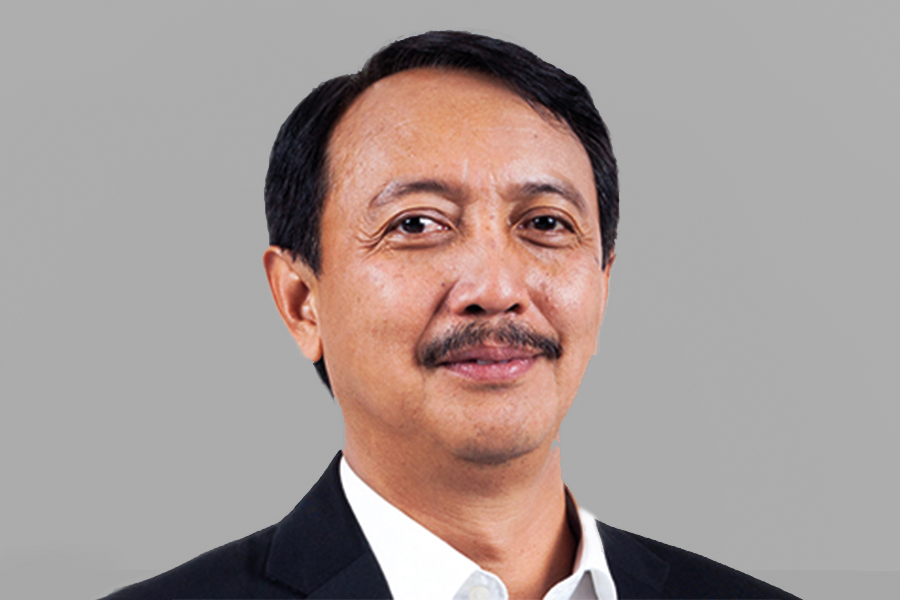
Indonesian aerospace company PT Dirgantara Indonesia (PTDI) has carved out a niche for itself as one of the Asia-Pacific region’s foremost manufacturers and MRO operators of light and medium turboprop aircraft. In early 2019 PTDI signed an agreement with Abu Dhabi-based AMMROC, just one of a series of international partnerships that are leading to a ramping up of their production and activities. In this interview, PTDI’s president director Elfien Goentoro appraises the recently-signed defense MoU between Indonesia and the UAE, gives an update on their development program for UAVs and looks forward to building further international partnerships
Indonesia’s minister of defense recently signed a MoU with the government of the UAE, how do you see this agreement opening up potential business for your company?
The signing of this agreement will open up not only G2G opportunities, but B2B and investment opportunities as well, and it will allow us to continue and expand our current business relationships with the UAE and Emirati entities. As an example of what we can contribute, Calidus has contracted us to run our aerostructure program and to provide aircraft components. Furthermore we signed an agreement in Langkawi in 2019 with the UAE Air Force’s Advanced Military Maintenance Repair Overhaul Center (AMMROC) to collaborate on maintenance, repair and overhaul activity, which includes SLEPs – Service Life Extension Programs – and structure inspection services for their CN235 aircraft. We have already completed 5 aircraft and will complete the sixth in March. For 2020 we will continue this collaboration and will carry out upgrades and automatic dependent surveillance broadcasts for a further four CN235 aircraft which will include spare parts and rewiring. We will continue this cooperation while looking to improve on or exchange our capabilities in the field of engineering through technology transfers, as well as through our certification program. A further problem we have dealt with was in the UAE, where because of the high temperatures at certain months of the year, engine performance can decrease. We assisted in finding a solution to this issue and this is an area where we could do more work given our experience.
Could you tell us of your core activities and where do you see further growth coming from?
We have built 450 fixed-wing and rotary wing aircraft since our founding in 1976, including 51 aircraft for export. This includes over 200 helicopters, 68 CN235 aircraft and 160 NC212 aircraft, with a further 10 currently in production to be sold to the Air Force, and also for export to the DR Congo. We are currently working on installing strike capabilities on the CN235 including 30 mm guns and hard points for missiles. In terms of marine patrol we are working on anti-submarine capabilities and we have sold to the Indonesian Navy. In addition, we have proposed to the Air Force that we can supply them with not only military transport planes, but also anti-submarine, maritime patrol and surveillance aircraft.
Could you tell us about the expansion of your Unmanned Aerial Vehicle (UAV) program?
We have just started a consortium to enhance cooperation and development of this program with the aim that we will be up and flying in 2020. These UAVs will be for surveillance and intelligence gathering purposes, rather than attack aircraft. The UAV will be certified in 2021 at which point we will be able to manufacture it for export. In 2022 we will be able to weaponize the aircraft.
And are you looking to collaborate on more MRO programs?
Of course, and we are already in discussions with certain partners which will allow us to improve our capacity and our maintenance capabilities. We currently have long-term MRO agreements in place with Malaysia, Pakistan, UAE and the Republic of Korea.
What potential is there for investors from the UAE to partner with you to increase production?
Two years ago we were asked to send a proposal to Mubadala Investment Company regarding the production of 30 N219 turboprop aircraft, which included the construction of a final assembly facility. Our current capacity only allows us to build four N219 aircraft per year, the first of which will be completed in 2022, however through a framework agreement for investment we are planning to expand, which will allow us to build 12 N219 aircraft per year. This will create more jobs, more revenue and more profits.
What is your vision for business with the UAE over the next five years?
Over the next five years I hope to see ever closer cooperation, not only in terms of numbers of aircraft, but also MRO activity, training, technical support and engine services. The more we work with the UAE – because of the volume of business there – the more we can build capacity here at PTDI. We want to become a leader in the light and medium turboprop aircraft market, and a renowned aerospace company, not just in Indonesia, but in the wider ASEAN and Asia-Pacific region. We will continue to focus on light and medium turboprop aircraft because this is where our expertise is, and because Indonesia, as an archipelago of 17,000 islands, many of which have short airstrips, depends on this kind of transportation.
How do you see the industry developing in the region?
I would like to see Indonesia become a hub for the aerospace industry in the ASEAN region, and for other countries to contribute to creating a Pan-ASEAN industry with PTDI at its heart.